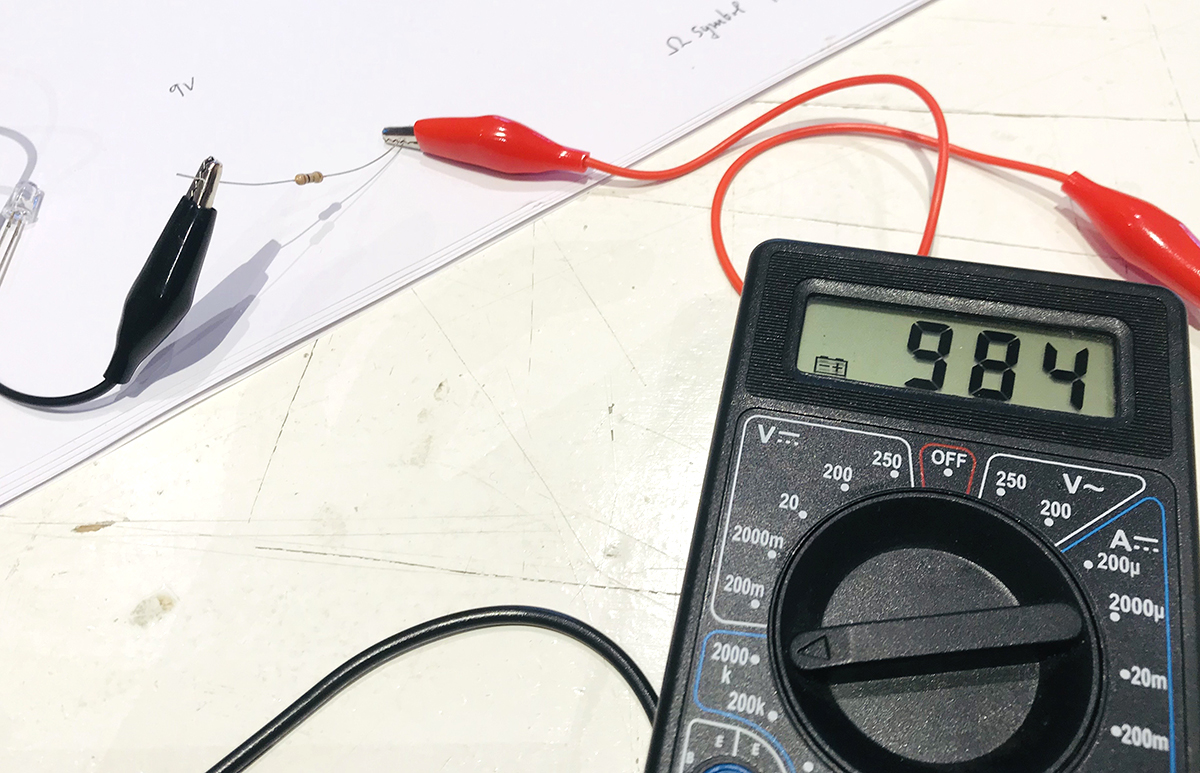5. E-textiles¶
Global class by Liza Stark from The New Parsons Faculty
Local classes by Emma Pareschi from TextileLab Amsterdam at Waag.
E-Textiles = Embedding techs on textiles to give new functionality
In this assignment, we will produce one digital and one soft analogue sensor experimenting with the materials available at the lab. Use Arduino to read and understand soft sensors. Reproduce the same sensor with different materials/techniques (hard/soft).
- Create one digital and one soft analogue sensor
- Program a LED interaction with a soft sensor
- Integrate it in a swatch using hard-soft connections
Electricity¶
Kinds of energy:
- Mechanical energy - cause: motion - result: motion
- Thermal energy - cause: different heat - result: motion, heat
- Sonic energy: - cause: vibration - result: sound
ELECTRICAL ENERGY or ELECTRICITY:
- cause: charged particles
- result: motion, heat, sound, light.
Resulting from the existence of charged particles:
- Neutrons - no charge
- Protons - positive charge
- Electrons - negative charge
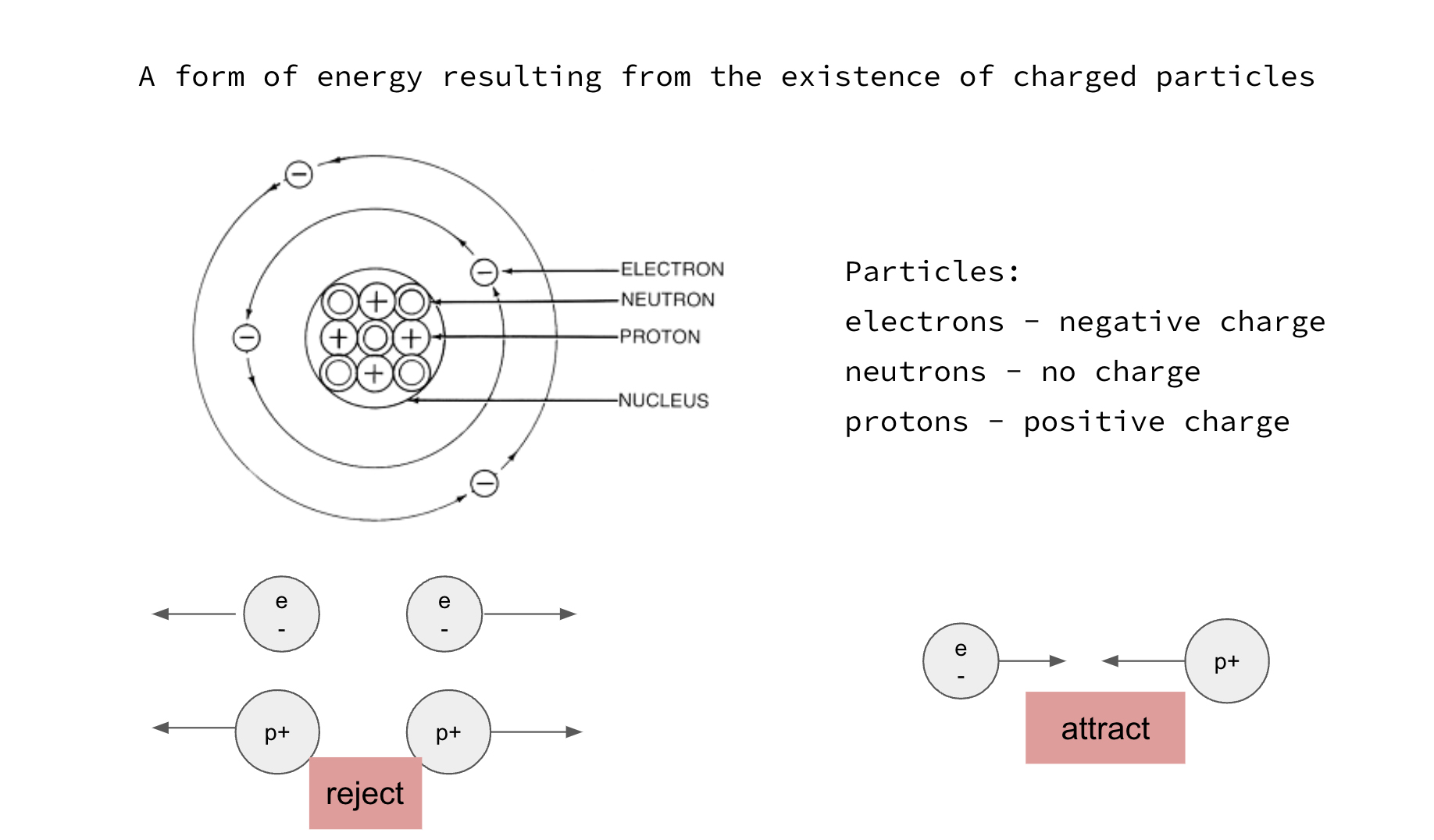 Electric energy scheme, Emma Pareschi
Electric energy scheme, Emma Pareschi
What is a circuit
A circuit is a path for electricity to flow from Power to Ground. Are close loops in with electrons can travel.
Concepts in electronics:
- Voltage - Volts - V
- Current - Amps - I - The rate at which electrical charge flows
- Resistance - Ohms - R - The amount of material that resists the flow of current.
- Short Circuit - error when needs resistance

Schematic power VCC and GND, Emma Pareschi
Main Energy Rules
- ELECTRONS ARE LASY - They follow the least resistant path.
- ELECTRICITY HATES WASTE - All energy must be used. Otherwise, it will dissipate as heat and possibly damage your components.
- CIRCUITS ARE A SYSTEM - Differents components play a specific role in the circuit. You need to know which parts you need and how you should arrange them.
Conductive Materials¶
Fabrics¶
Fabrics can as a conductive material and resistance depending on the conductibility. + Resistance + Strechiness + Solderability + Feel + Substrate + Produtive process

Conductive Fabrics, Liza Stark
Threads¶
They are used to create traces or just to assemble parts of the circuit.
- Resistance
- Solderability
- Thickness
- Substrate + Produtive process
Note: wax the thread to easy needler

Conductive Threads, Liza Stark
Inks and Tapes¶
- Copper Tape
- Copper foil sheet
- Conductive fabric tape
- Bare conductive electric paint
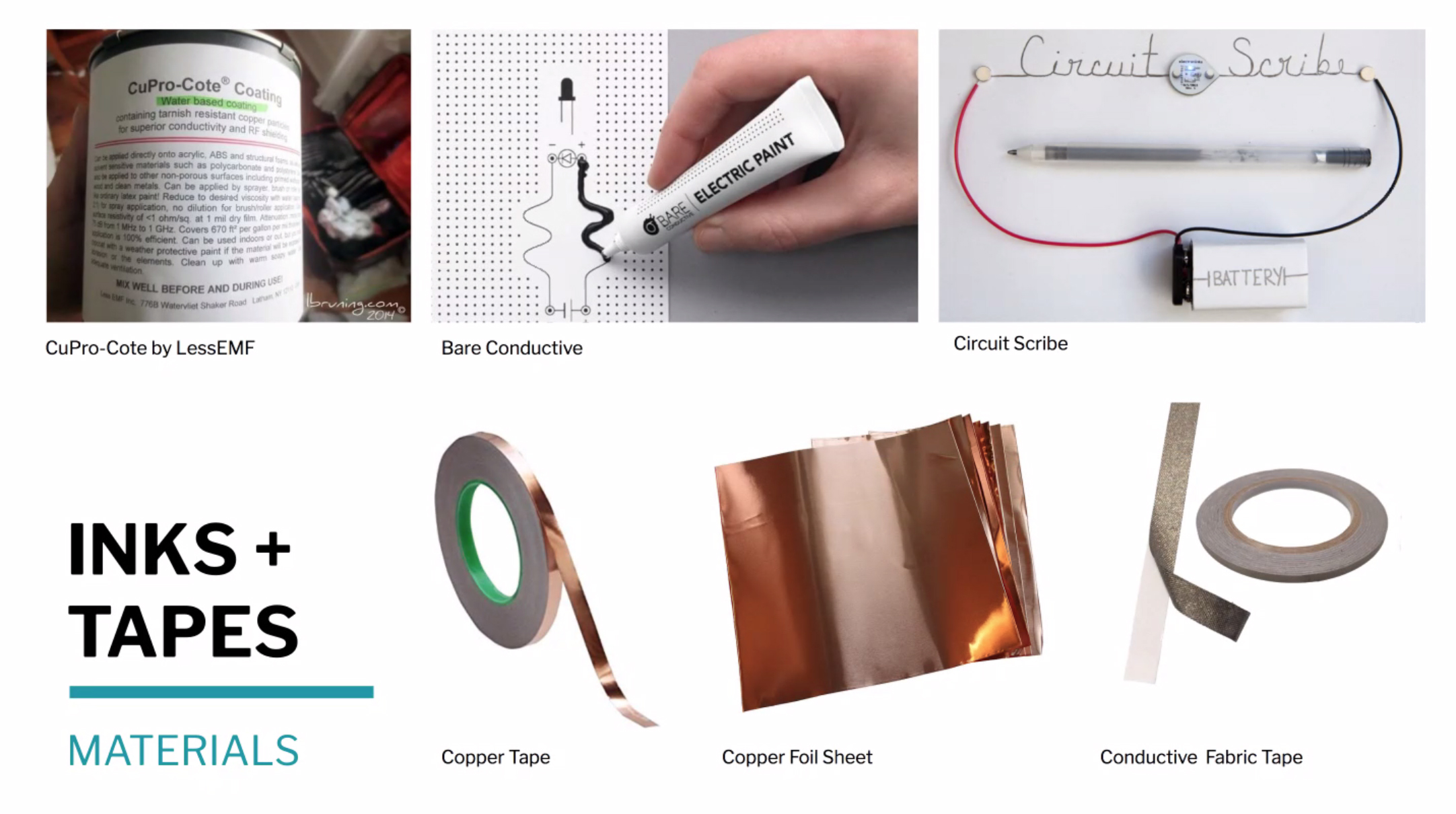
Conductive Inks and Tapes, Liza Stark
Tools¶
- Vinyl cutter, laser, embroidery, machine sewing
- Multimeter, soldering iron
Hard/soft connections¶
- Machine-sewable
- Hard/Soft Connections
- crimp beads
- Perfboard/Conductive thread
- Metal machine popper/Conductive fabric
- Hand sewable metal popper/Conductive thread
- Wire/Conductive fabric (soldering)
Soft sensors¶

Sensor, Emma Pareschi
Digital¶
A switch is a break in a circuit. Since the circuit is not complete, no electricity can flow to the components.
- Switches - momentary/toggle
- Tilt
- Joystick
- Stroke
Analogue¶
Sensors AKA variable resistors
- Pressure sensor (analogue input example)
- Potentiometers
- Stretch sensors - fabric/knit
- Bend sensors
- Accelerometer
Input¶
- Digital ≠ Analogue
DIGITAL
- Switches
- On/off
- 0110111101101110
- on and off
Analogue
- Sensors
- Range of values
- 1023, 521, 34range of value
Analogue resistance
By varying resistance of your input, you can change the output.
We can change resistance in three ways: distance, contact, and surface
area.
- DISTANCE
Resistance increases over distance no matter what the material
- PRESSURE
Some materials are pressure sensitive will decrease in resistance when
pressure is applied to them.
- SURFACE AREA
Increasing the size of the area for electricity to flow will decrease the
resistance.
Resistive materials¶
VELOSTAT - Carbon impregnated black polyethylene film - 4 mil thick - Volume resistivity is <500 Ohms/cm - Conductivity is not affected by humidity or aging - By 3M, distributed locally by LessEMF
EEONTEX - Use the stretchy fusible interfacing to adhere Eeontex onto conductive or non-conductive fabric
Programming¶
How to program sensor beahaviour

Input - process - Output and feedback
Working with ARDUINO¶
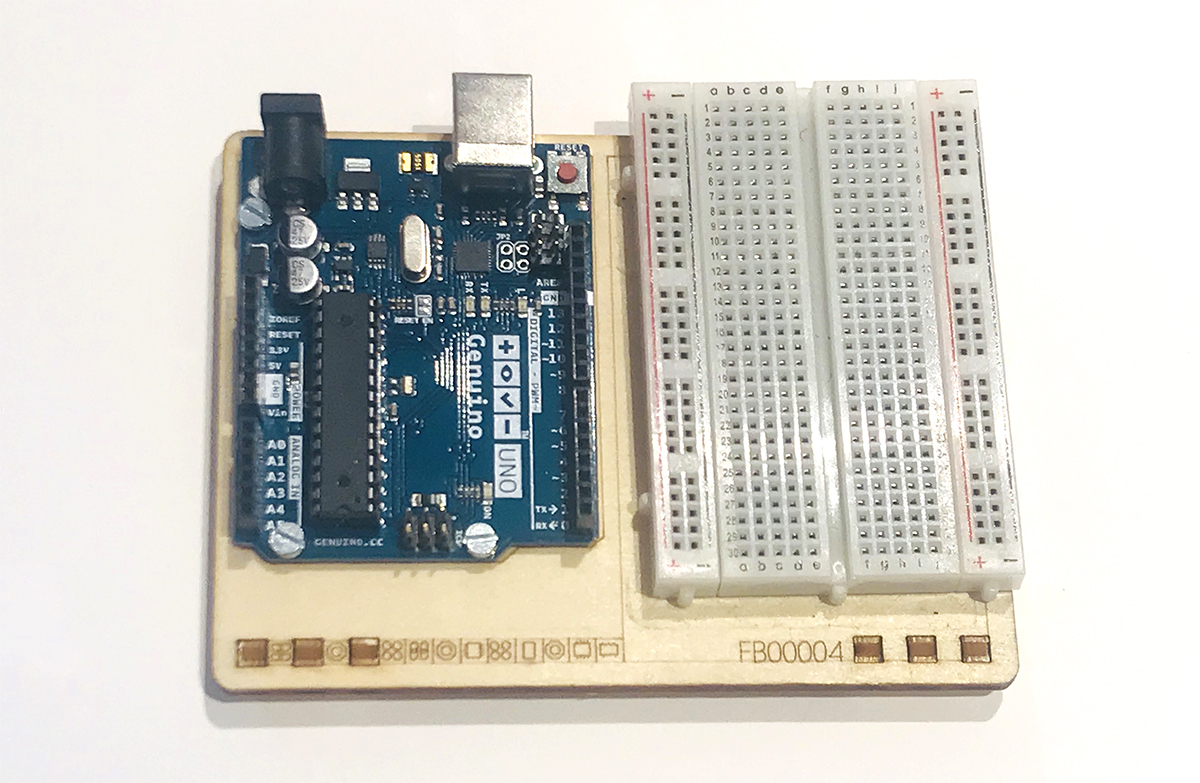
Arduino One and Breadboard, Carolina Delgado
Better for starters, it contains Hardware + Software + Community (to ask and change experiences).
- Left side pins - controls analogue flow
- Right side pins - controls digital flow
With the INPUT - OUTPUT pins you can:
- Read Voltage
- Control Voltage
Power Pins
- 5V / 3.3V: Power
- GND: Ground Pin
Breadboard
It is a physical support for making temporary circuits and prototyping,
and they require absolutely no soldering.
- Vertical lines are connected
- Horizontal lines are connected
Multimeter
Device measures Volts, Amperes and Sound.
Multimeter sample, Carolina Delgado
Measuring Resistor using Multimeter, Carolina Delgado
Tests¶
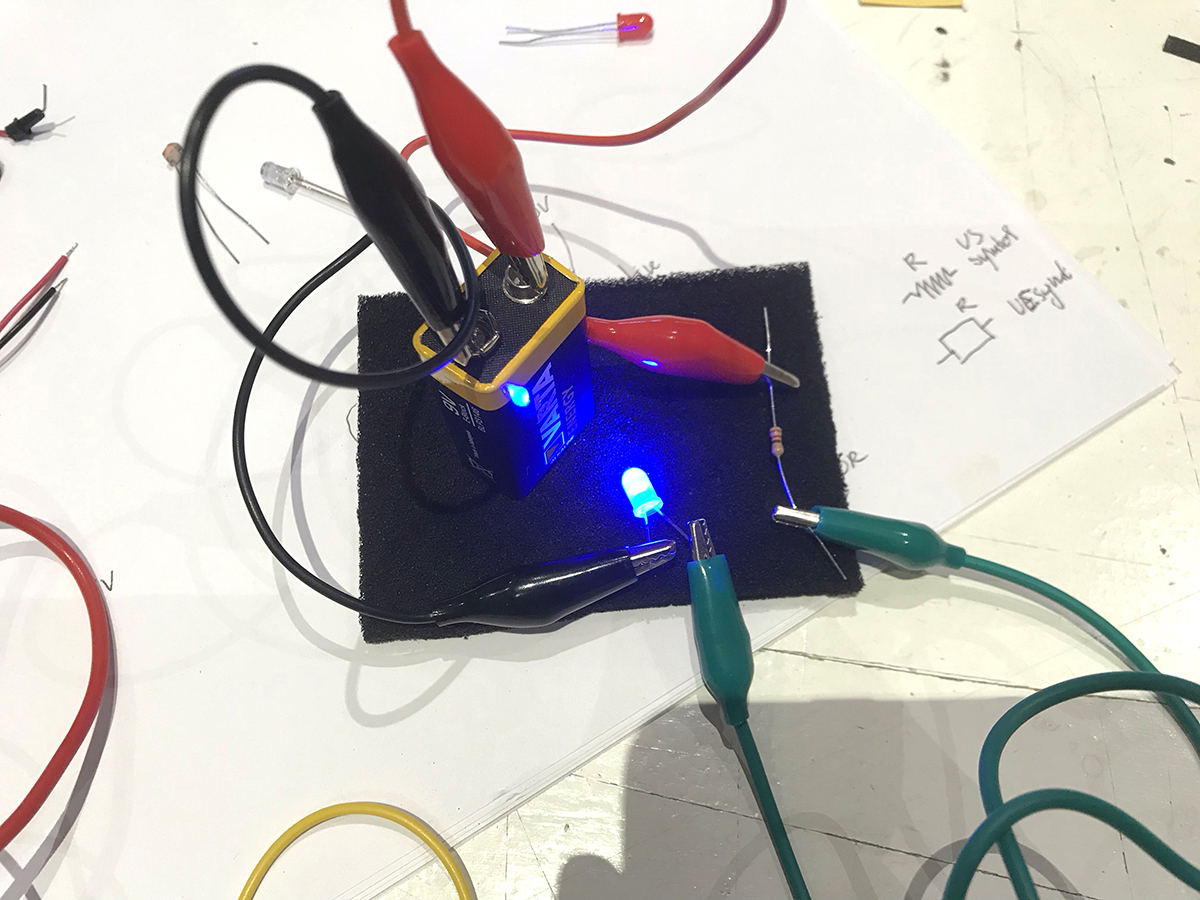
9v Batery Led circuit, Carolina Delgado
Arduino Led circuit, Carolina Delgado
Youtube
Arduino Blinking to Fade LED, Carolina Delgado
Youtube
Arduino with Digital Pressure Switch, Carolina Delgado

Presure Swich scheme, Liza Stark
Youtube
Arduino with Digital Pressure Switch and Led, Carolina Delgado
RESULTS¶
Garment Switch Zipper¶
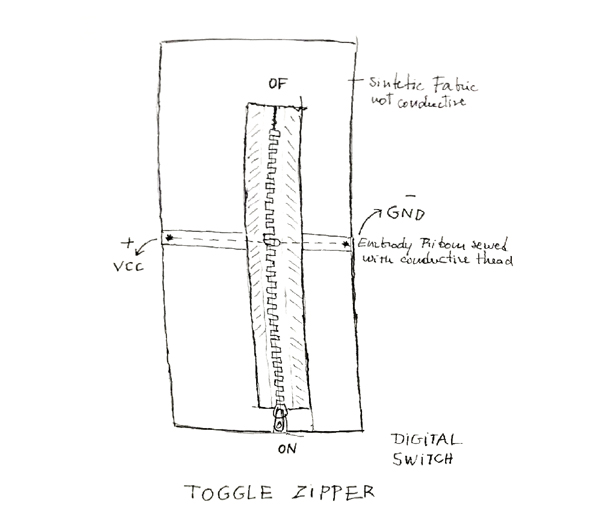 Zipper Switch Idea, Carolina Delgado
Zipper Switch Idea, Carolina Delgado
The scheme is simple but there are some things to consider:
- Test the zipper and the yarn to confirme they are really conductive
- The conductive thread needs to touch the zipper pellets but they can not be bulky, otherwise the zipper doesn't close.
- The ribbon in use is a path to the conductive thread, so you don't need it
- The fabric and the thread for sewing the zipper are not conductive.
- In the edges of the ribbon with thread make a bulk button to connect Power and Ground.
For the draws of the circuits, it becomes complex if we want to explain in detail all the pins connections. For that, Sara recommend me a APP to draw the circuit squeems:
Fritzing
 Zipper Switch Connecting Scheme, Carolina Delgado
Zipper Switch Connecting Scheme, Carolina Delgado
Arduino Code
The simple way is to use templates anyone allready made, so you know that works. I used the example from Arduino on Menu FILE > EXAMPLE > DIGITAL > BUTTON.
- Connect the Arduino board to Computer
- Upload and test the toggle switch
- It it working well? Confirm all the pins, Power and Ground conections.
- Unplug if you need to correct conections on BreadBoard. The Plug again.
- Correct the code if necessary: in this case I had to coorect the code to Button LOW.

Led Digital Switch Arduino Code, Carolina Delgado
In the end we have an Arduino and Breadboard with Led connected to a working Textile Digital Switch
Arduino LED with Toggle Zip Switch, Carolina Delgado
Biomimicry Fish¶
Ribbon test
I made a long ribbon test with felt, wire and velostat.
The wool felt served as isolation fabric and sintetic thread was used to seew both sides together. However, it did not work, because the wire was coated, the energy was isolated from eachother.
Conclusion: test well your conductive materials. If its coated it can be strach or burn the coat to remove it in the extremes. However, for a velostat resistor you need to have all the wire/thread conductive to pass the power from bith sides of the ribbon.
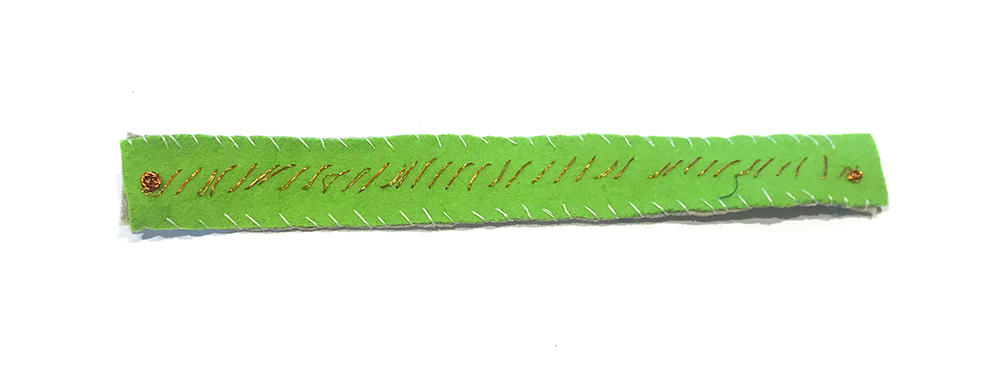
Wool Felt Ribbon Sensor with Velostat, Carolina Delgado
Fish Biomimicry
I wanted to make a sensor inspired by the fish moviment.
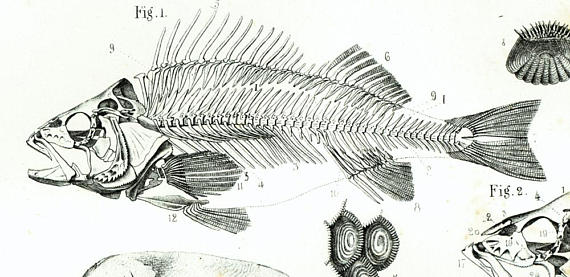
Fish squeleton, n.a.
How to
Consider Velostat as isolation materials that's also a variable resistor, depending one pressing it and bending. It isolates the conductive materials from each side, but when it's pressed it can be conduct some electricity variation.
- Each piece of felt as one external side, and one internal side with squeleton bone.
- Edges of the threads need a dot to connection Power and Ground - make a bulk of thread.
- Velostat as to be covering all conductive thread in the meadle of the sensor.
- Edges of the threads must be isolated with tape.
- Test with a Multimeter if all work together. Chose Ohm value and test the ideal sensor value.
Sensor Fish Connecting Scheme, Carolina Delgado
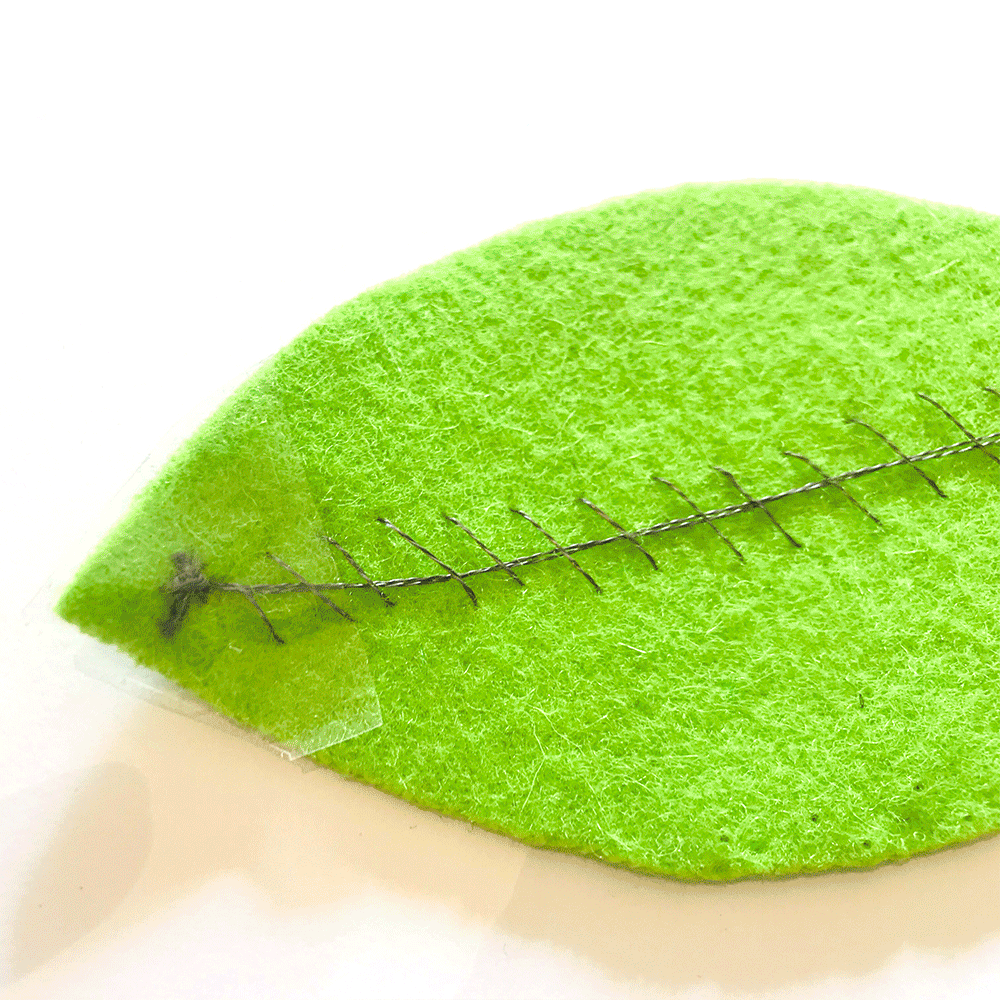
Fish assembling gif, Carolina Delgado
Biomimic Fish movements with Textile Analogue Resistor Sensor - Conductive Garment
Using Velostat and Felt and conductive yarn to make a resistor sensor
Fish Velostat Sensor Working, Carolina Delgado
Resources¶
- E-textiles Tutorials - Fabricademy Electronic tutorials
- Kobakant - How to get what you want - soft sensors, hard/soft connections, conductive materials, etc.

